The origin of the tens of thousands of M3 Scout Car, M2 and M3 Half Tracks cars that soldiered for the allies in WW2 and so many nations for most of the cold war and up to the 1980s in many cases (like for the IDF), could trace back their origin, not to White, but to Corbitt. The story of the scout car M2 is now forgotten. It was an early US Army armoured car of the 1930s, intended for the cavalry, designed from 1934 and introduced in 1935, first named T9 but standardized in March 1938 as the M2, after 22 vehicles delivered including prototypes. Next followed by 60 M2A1 Scout Cars by White in 1937-1939. The first used to train cavalry units in the US and the remainder for training M3 scout car crews for the duration of the war, never leaving US soil.
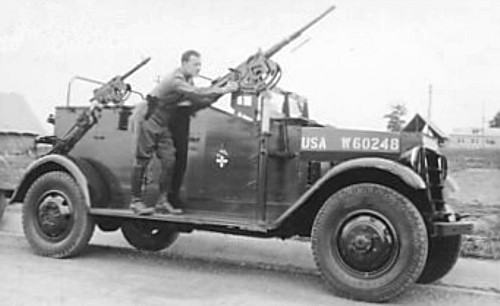 In 1933 the US Army, still under massive budgetary constraints, post-1929 crisis, was looking at modernizing the cavalry corps, still the main scouting element for the US Army. The obvious option was to experiment a conversion to fast vehicles, armoured if possible. Tenders were made to which many manufacturers answered in 1934, leading to Corbitt, winning the contest with a powerful, fast, open topped and heavily armed 4x4 90+ hp V8 armoured car which best answered the Cavalry needs. The vehicle was funded, a few prototypes delivered by Corbitt for field tests, as the Corbitt Car, Scout, T9. A single vehicle was also used, based on the Corbitt 1 1/2-ton 4x4 truck chassis, as the signal corps T9 Communications Car. Vignette: M1 Scout Car or Chevrolet Car, Armored, T8.
In 1933 the US Army, still under massive budgetary constraints, post-1929 crisis, was looking at modernizing the cavalry corps, still the main scouting element for the US Army. The obvious option was to experiment a conversion to fast vehicles, armoured if possible. Tenders were made to which many manufacturers answered in 1934, leading to Corbitt, winning the contest with a powerful, fast, open topped and heavily armed 4x4 90+ hp V8 armoured car which best answered the Cavalry needs. The vehicle was funded, a few prototypes delivered by Corbitt for field tests, as the Corbitt Car, Scout, T9. A single vehicle was also used, based on the Corbitt 1 1/2-ton 4x4 truck chassis, as the signal corps T9 Communications Car. Vignette: M1 Scout Car or Chevrolet Car, Armored, T8.

Corbitt Motors, as a Company, was located in Henderson, northeastern North Carolin, operating for first half of the 20th century, by Richard J. Corbitt, buyer and seller of leaf tobacco from 1894. In 1899 he moved to the buggy manufacturing business, buying all of his competitors. In 1905 hse created a first automobile or “motor buggy”, with full production from 1907, importing workforce from Detroit, but he was losing money on every car sold. In 1910 Corbitt built his first truck and in 1913, became a full-time truck builder for the next 40 years, adding trailer of vans, drop-frame vans, and flatbeds, selling these to all large motor carriers of the Carolinas. In 1917 he provided the states its first school buses.
In 1917-18, Corbitt supplied trucks to the US Army and Navy, notably 4x4s and 6x6s up to the mid-1930s. He continued to grow in 1934 by buying obsolete automobile sheet metal from Auburn, recycled into the front ends of its lightest truck. From 1939-1945 Corbitt designed and built over 3,200 50SD6 6-ton, 6×6 prime movers for the US Army with 779 or the 855 Cu-in Hercules 6-cyl. gas. engines, used in every theater of operation but lacked production capacity such as White, Brockway, Ward LaFrance, and FWD which produced its own designs. It success story wit the military was epxlained by its flexibility and "can-do" attitude leading to make quick modifications. For example when the Army demanded an all-steel cab, Corbitt swapped over night from a wooden frame to only all-steel cabs.

Corbitt-White model 666
In 1946, Corbitt built two prototypes for the huge 8×8 T-33 tank transporter for the Army mirroring the Pacific "deagon wagon" as it was armoured with ¼ inch plating and more massive at 131” () tall and 114” () wide, powered by a 450 horsepower P&W radial engine at the rear of the cabin. It was the second largest truck in the world at the time. Post-war production was 600 trucks for 1946 alone but demand fell, albeit his trucks were still in the news. One pulled Howard Hughes’ 75-ton “Spruce Goose” from Hughes Aircraft at Culver City and Long Beach, a record. Ultimately the company went out of business in 1955 but South and North Carolinas Corbitt trucks and buses soldiered on well into the late 1970s, notably its trusted crane carriers. Its tall COE tractors also worked for another decade in the transport industry, a common sight on highways and first with a tilt cab.
Always a small dedicated team of at peak, 325 people its 5-strong engineering department pull out achievements, notably the company alsways did its own cabs, own very dutable frames, using 5/16 inch chrome manganese instead of its copetitors's ¼ inch carbon steel. His trucks ran trhough guelling dynamometer test and road tests and his engines were the most trusted Continental gasoline and Cummins or Hercules diesels. Some trucks used monstrious 150 hp supercharged engines ad its farm tractors were mostly exported and active until the 1980s. But profit was never there after WW2 and the last trucks was produced in 1953, some sold in 1954-55 before the company was liquidated and closed. Parts to Corbitt owners were still sold for decades.
The single prototype of the T9 Communication Vehicle in 1935
The T9 scout car was designed by Corbitt and built on their 1 1/2 ton truck chassis, using their "Corbitt Eight" inline gasoline engine. While the chassis and overall vehicle design were produced by Corbitt, the armored body was produced at the time by Diebold Lock & Safe. Along with the manufacture of two new M2 Scout Cars in 1935, between 19 and 20 T9 Scout Cars were delivered by Corbitt. They would be all redesignated M2 Scout Car.
Corbitt provided a sturdy Chassis with a full 4x4 drive and tall military tires, a powerful engine that coulmd bring the armoured vehicle to nearly 100 kph on flat roads, at the time exceptional, and an open, modular design, that favored peripheric reconnaissance and enable "plug and play" light defensive and offensive armament. The vehicle was later redesignated the "M2 scout car" and standardized by 1938. Only about twenty T9 or M2 of the "1st serie" were produced by 1938. The vehicle, looked like the blueprint for the later M3 Scout Car made by White, which already produced Corbitt trucks in WW2 adn new the company well.
Protection was made of thin, 0.5 inches or 13 mm plating forward, down to just 0.25 inches or 6,4 mm for the sides and rear. It was 90° and could be pierced by AP rifle bullets. The vehicle weight 8,135lbs (3,690kg) for an a length of 202.50" (5,143 m) a width of 80.37" (2,041 m) and a height overall of 81" (2,06 meters). Its front and rear tread measured 63.75" (1,619 m), fora wheelbase of 131" (3,33 m) and a ground clearance of 9.75" (24.8cm) and ground pressure with zero penetration at 57psi (4.0kg/cm²).
As for the armament, it had four brackets in all, to mount two 0.30 cal machine guns on each side, ensuring good overall defensive fire, but no heavier armament. The idea of installing a 0.5 M1920 Browning M2 heavy machine gun came later on the M2A1. The M2E1 featured indeed a .50 cal M2HB MG on flexible carriage mount M21 for 360° traverse, complemeted by two .30cal M1917A1 MGs on flexible on carriage mounts M22.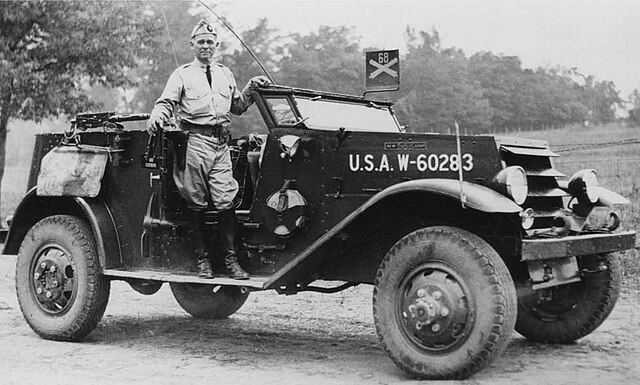
Early T9 in 1935-36 cavalry US army trials
The vehicle went always equipped with the sturdy Lycoming "Corbitt Eight" 94-horsepower, with a lot of torque. It was able to pull around the 7,900lb (3,600kg) chassis at a top speed of 58mph (93kph), for a range 200 miles (322km). The MODGFC Lycoming 6-cylinder in line, liquid cooled gasoline engine developed 94hp @ 3500 rpm. It was coupled with a manual transmission with four speed forward and one reverse. Its suspensions on both axles were Leaf-type. The steering was manual, unassisted, on the front axle only. To run its basic systems and the starter when cold it had an electric system rated for 6V.
This White M2E1 became indeed the true precursor to the M2A1/M3/M3A1 scout car serie. Corbitt could just not deliver enough of its armoured car or simplify the design for mass production. Only two vehicles from Corbitt were produced before being cancelled. The vehicle had its hull modified a bit, but kept the initial sloped down single window windshield with slanted side windows, with simplified folding armoured shutters on either sides, plus rear folding down panels, but kept the protruding wheels arches at the back with mudguards, but simplified the forward mudguard, making them simpler and flatter, caracteristic on what later became the M3 Scout car and M2-M3 half track family.
The two lights on the front fenders were protected by brush guards, the front flat bumper had towing hooks but no winch, and there was also a towing eye at the back bumper. The radiator kept its four folding armoured louvres in front of the radiator on a square base, typical of later vehicles. The whole rear panel of the combat compartment could be folded down. At the base of the driving cab were located a pickaxe and shovel, tool box sitting on steps, and under the fighting compartment was located the main fuel tank. This was a far more militarized and well-though after vehicle. If the White M2A1s were used as trainers, in infantry companies in WW2, the fate of the older cavalry M2s is unclear. But the model was further refined into the M3A1, of which thousands were produced in 1939-42.
Development of the M2 Scout Car
 In 1933 the US Army, still under massive budgetary constraints, post-1929 crisis, was looking at modernizing the cavalry corps, still the main scouting element for the US Army. The obvious option was to experiment a conversion to fast vehicles, armoured if possible. Tenders were made to which many manufacturers answered in 1934, leading to Corbitt, winning the contest with a powerful, fast, open topped and heavily armed 4x4 90+ hp V8 armoured car which best answered the Cavalry needs. The vehicle was funded, a few prototypes delivered by Corbitt for field tests, as the Corbitt Car, Scout, T9. A single vehicle was also used, based on the Corbitt 1 1/2-ton 4x4 truck chassis, as the signal corps T9 Communications Car. Vignette: M1 Scout Car or Chevrolet Car, Armored, T8.
In 1933 the US Army, still under massive budgetary constraints, post-1929 crisis, was looking at modernizing the cavalry corps, still the main scouting element for the US Army. The obvious option was to experiment a conversion to fast vehicles, armoured if possible. Tenders were made to which many manufacturers answered in 1934, leading to Corbitt, winning the contest with a powerful, fast, open topped and heavily armed 4x4 90+ hp V8 armoured car which best answered the Cavalry needs. The vehicle was funded, a few prototypes delivered by Corbitt for field tests, as the Corbitt Car, Scout, T9. A single vehicle was also used, based on the Corbitt 1 1/2-ton 4x4 truck chassis, as the signal corps T9 Communications Car. Vignette: M1 Scout Car or Chevrolet Car, Armored, T8.
About Corbitt

Corbitt Motors, as a Company, was located in Henderson, northeastern North Carolin, operating for first half of the 20th century, by Richard J. Corbitt, buyer and seller of leaf tobacco from 1894. In 1899 he moved to the buggy manufacturing business, buying all of his competitors. In 1905 hse created a first automobile or “motor buggy”, with full production from 1907, importing workforce from Detroit, but he was losing money on every car sold. In 1910 Corbitt built his first truck and in 1913, became a full-time truck builder for the next 40 years, adding trailer of vans, drop-frame vans, and flatbeds, selling these to all large motor carriers of the Carolinas. In 1917 he provided the states its first school buses.
In 1917-18, Corbitt supplied trucks to the US Army and Navy, notably 4x4s and 6x6s up to the mid-1930s. He continued to grow in 1934 by buying obsolete automobile sheet metal from Auburn, recycled into the front ends of its lightest truck. From 1939-1945 Corbitt designed and built over 3,200 50SD6 6-ton, 6×6 prime movers for the US Army with 779 or the 855 Cu-in Hercules 6-cyl. gas. engines, used in every theater of operation but lacked production capacity such as White, Brockway, Ward LaFrance, and FWD which produced its own designs. It success story wit the military was epxlained by its flexibility and "can-do" attitude leading to make quick modifications. For example when the Army demanded an all-steel cab, Corbitt swapped over night from a wooden frame to only all-steel cabs.

Corbitt-White model 666
In 1946, Corbitt built two prototypes for the huge 8×8 T-33 tank transporter for the Army mirroring the Pacific "deagon wagon" as it was armoured with ¼ inch plating and more massive at 131” () tall and 114” () wide, powered by a 450 horsepower P&W radial engine at the rear of the cabin. It was the second largest truck in the world at the time. Post-war production was 600 trucks for 1946 alone but demand fell, albeit his trucks were still in the news. One pulled Howard Hughes’ 75-ton “Spruce Goose” from Hughes Aircraft at Culver City and Long Beach, a record. Ultimately the company went out of business in 1955 but South and North Carolinas Corbitt trucks and buses soldiered on well into the late 1970s, notably its trusted crane carriers. Its tall COE tractors also worked for another decade in the transport industry, a common sight on highways and first with a tilt cab.
Always a small dedicated team of at peak, 325 people its 5-strong engineering department pull out achievements, notably the company alsways did its own cabs, own very dutable frames, using 5/16 inch chrome manganese instead of its copetitors's ¼ inch carbon steel. His trucks ran trhough guelling dynamometer test and road tests and his engines were the most trusted Continental gasoline and Cummins or Hercules diesels. Some trucks used monstrious 150 hp supercharged engines ad its farm tractors were mostly exported and active until the 1980s. But profit was never there after WW2 and the last trucks was produced in 1953, some sold in 1954-55 before the company was liquidated and closed. Parts to Corbitt owners were still sold for decades.
Design of the T9

The single prototype of the T9 Communication Vehicle in 1935
The T9 scout car was designed by Corbitt and built on their 1 1/2 ton truck chassis, using their "Corbitt Eight" inline gasoline engine. While the chassis and overall vehicle design were produced by Corbitt, the armored body was produced at the time by Diebold Lock & Safe. Along with the manufacture of two new M2 Scout Cars in 1935, between 19 and 20 T9 Scout Cars were delivered by Corbitt. They would be all redesignated M2 Scout Car.
Corbitt provided a sturdy Chassis with a full 4x4 drive and tall military tires, a powerful engine that coulmd bring the armoured vehicle to nearly 100 kph on flat roads, at the time exceptional, and an open, modular design, that favored peripheric reconnaissance and enable "plug and play" light defensive and offensive armament. The vehicle was later redesignated the "M2 scout car" and standardized by 1938. Only about twenty T9 or M2 of the "1st serie" were produced by 1938. The vehicle, looked like the blueprint for the later M3 Scout Car made by White, which already produced Corbitt trucks in WW2 adn new the company well.
Layout & Protection of the T9 Scout Car
The chassis of the T9 was based on the light Corbitt 1.5-ton truck, and had a crew of between 5 and 7 men. The driver and co-driver sat in the forward cab, and the remainder were observer and MG-gunners located ion the rear compartment. There was an observation commander in hull right front, the driver in hull left front and six passengers in the hull rear.Protection was made of thin, 0.5 inches or 13 mm plating forward, down to just 0.25 inches or 6,4 mm for the sides and rear. It was 90° and could be pierced by AP rifle bullets. The vehicle weight 8,135lbs (3,690kg) for an a length of 202.50" (5,143 m) a width of 80.37" (2,041 m) and a height overall of 81" (2,06 meters). Its front and rear tread measured 63.75" (1,619 m), fora wheelbase of 131" (3,33 m) and a ground clearance of 9.75" (24.8cm) and ground pressure with zero penetration at 57psi (4.0kg/cm²).
As for the armament, it had four brackets in all, to mount two 0.30 cal machine guns on each side, ensuring good overall defensive fire, but no heavier armament. The idea of installing a 0.5 M1920 Browning M2 heavy machine gun came later on the M2A1. The M2E1 featured indeed a .50 cal M2HB MG on flexible carriage mount M21 for 360° traverse, complemeted by two .30cal M1917A1 MGs on flexible on carriage mounts M22.
Mobility

Early T9 in 1935-36 cavalry US army trials
The vehicle went always equipped with the sturdy Lycoming "Corbitt Eight" 94-horsepower, with a lot of torque. It was able to pull around the 7,900lb (3,600kg) chassis at a top speed of 58mph (93kph), for a range 200 miles (322km). The MODGFC Lycoming 6-cylinder in line, liquid cooled gasoline engine developed 94hp @ 3500 rpm. It was coupled with a manual transmission with four speed forward and one reverse. Its suspensions on both axles were Leaf-type. The steering was manual, unassisted, on the front axle only. To run its basic systems and the starter when cold it had an electric system rated for 6V.
White M2A1 Scout Car
A improved version of the M2 scout car, designated the M2E1, suceeded to the M2 in 1938. Among other changes, it was equipped with heavier axles, a radio set and a full body track for the M2 0.5 inches "ma deuce" or lighter MGs. This rail-tire, circling around the entire perimeter of the open fighting compartment, using special mobile grippers, heavy and light machine guns could be easy to relocate to cover any angle, on the fly. This no longer required four light machine guns, and was a defining solution retained for the M2A1 and M3 when standardized in 1937-38.This White M2E1 became indeed the true precursor to the M2A1/M3/M3A1 scout car serie. Corbitt could just not deliver enough of its armoured car or simplify the design for mass production. Only two vehicles from Corbitt were produced before being cancelled. The vehicle had its hull modified a bit, but kept the initial sloped down single window windshield with slanted side windows, with simplified folding armoured shutters on either sides, plus rear folding down panels, but kept the protruding wheels arches at the back with mudguards, but simplified the forward mudguard, making them simpler and flatter, caracteristic on what later became the M3 Scout car and M2-M3 half track family.
The two lights on the front fenders were protected by brush guards, the front flat bumper had towing hooks but no winch, and there was also a towing eye at the back bumper. The radiator kept its four folding armoured louvres in front of the radiator on a square base, typical of later vehicles. The whole rear panel of the combat compartment could be folded down. At the base of the driving cab were located a pickaxe and shovel, tool box sitting on steps, and under the fighting compartment was located the main fuel tank. This was a far more militarized and well-though after vehicle. If the White M2A1s were used as trainers, in infantry companies in WW2, the fate of the older cavalry M2s is unclear. But the model was further refined into the M3A1, of which thousands were produced in 1939-42.
M2 specifications | |
| Dimensions (L-w-H) | 191 x 80.5 x 73.5 in. (4851 x 204 x 1867mm) |
| Weight | Empty 7900 lb, fully loaded 9100 lb |
| Crew | 2+6 |
| Propulsion | MODGFC Lycoming V8 5L 94 hp/3500 rpm |
| Top speed | 58mph (93kph) |
| Suspensions | 4x2 or 4x4 leaf spring |
| Range | 200 miles (322km) |
| Armament | T9: 4x 0.3 in M1919A4 LMG. M2E1: 1x 0.5 M1920 |
| Armor | .25 to .5 in. (6.35-12.7mm) |
Gallery
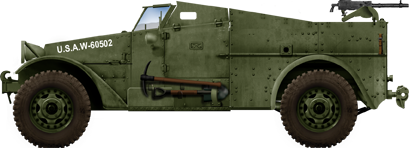
M2
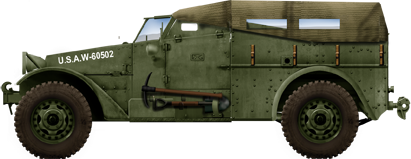
M2 with tarpaulin
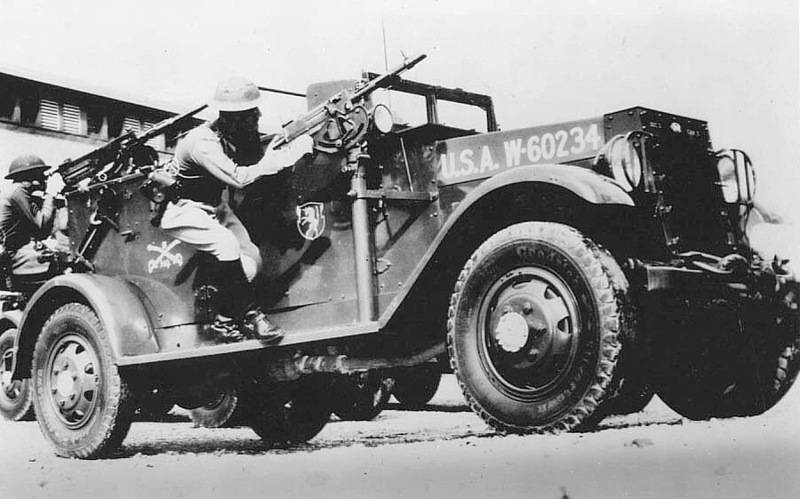
White T7 standardized as the M1 scout car in 1933: Hercules I carburetor 6-cyl. engine 4,6 l/75 hp opened top body with fwd armor 0.5 inches, 6,35 mm side armor, two 0.5 (12,7mm) Browning M2, two 0.3 Browning M1919, sides. 75 made for the cavalry battalion in Fort Knox.

Initial T9 of the 22nd Cavalry Corps, 1936

Marmon-Herrington T13 testing the M2 HMG. This soft steel training vehicle saw 38 built for the US National Guard, all delivered by March 1938.

T5EXNNXX self-propelled mortar

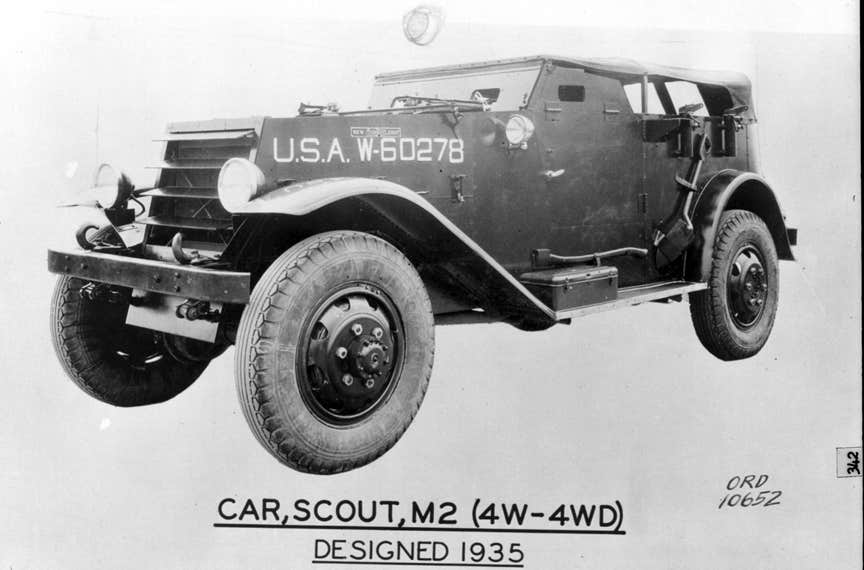
Original Corbitt M2 4W/4WD src

Marmon A75SSA scout Car in 1939 (not adopted)
Read More/Src
Books
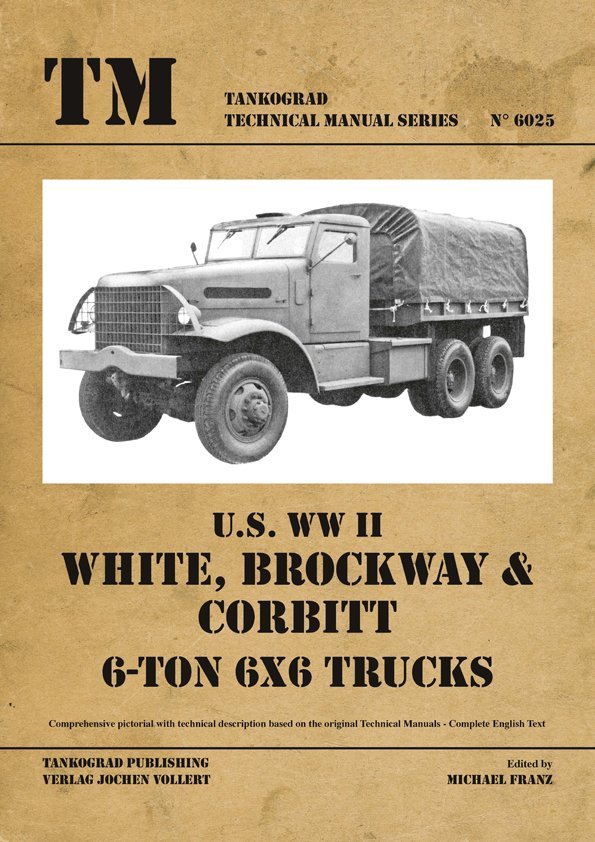
A Photo History of Armoured Cars In Two World Wars George Forty
Armored Car- A History of American Wheeled Combat Vehicles R.J. Hunnicutt
Encyclopedia of Armoured Cars Duncan Crow and Robert J. Icks
U.S. Military Wheeled Vehicles Fred W. Crismon
Links
corbitttrucks.comen.wheelsage.org/
warwheels.net T9 communication car
afvdb.50megs.com
Early scout cars
warwheels.net T9/M2 scout car
Videos
NoneModel Kits
None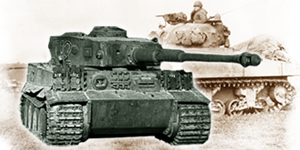
WW2 Tanks




























WW2 tanks posters
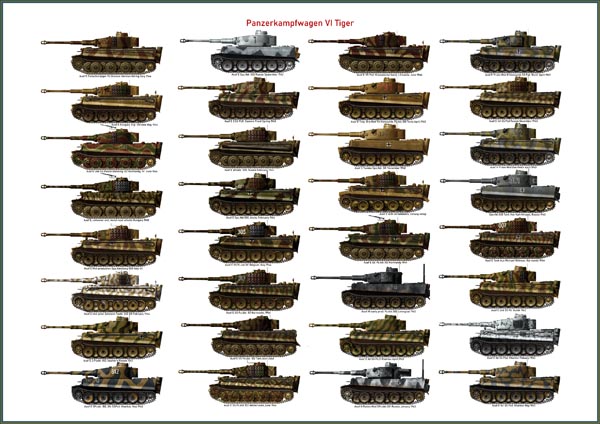
All Tiger tanks liveries.
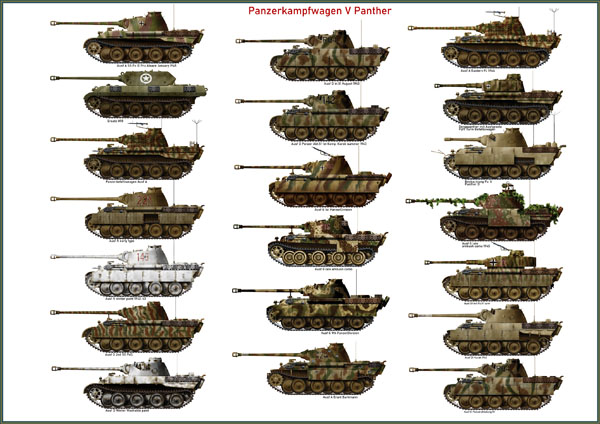
Panther liveries and variants

WW2 Armour - All tanks


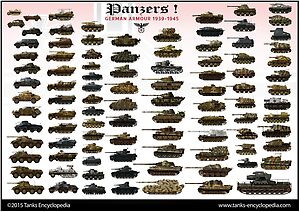








Tanks aces and single tanks series

Find more there
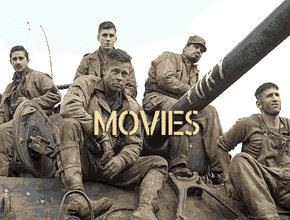
Museums, Movies, Books & Games
The Tanks and Armor in pop culture
Tanks and armored vehicles in general are only really grasped when seen first person: The mass, the scale, it's all there. Explore also the way tanks were covered in the movie industry, in books and in video games.Movies:
Best tanks movie on warhistoryonline.com
On imdb.com
On bestsimilar.com/
miltours.com
liveabout.com/
watchmojo.com
Video Games:
pcgamesn.com
historyhit.com
levvvel.com
vg247.com/best-tank-games
mmobomb.com/
alienwarearena.com

